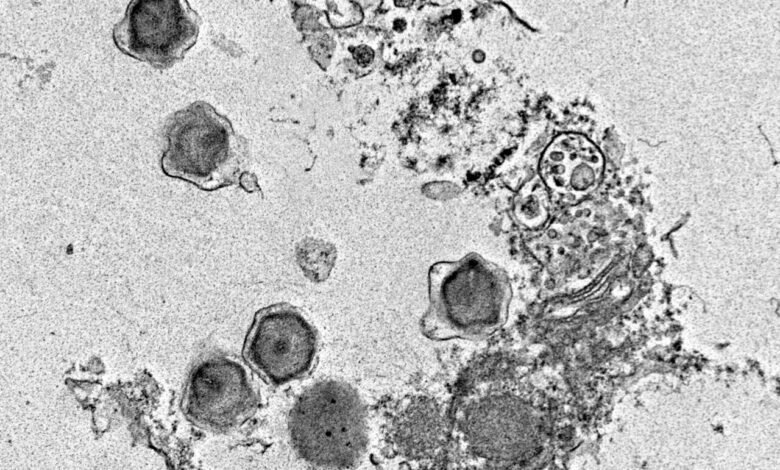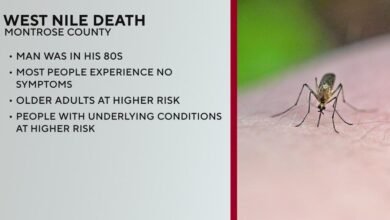Unearthed: 230 Mega Viruses Paving The Way For Ocean Life And Our Health!

New Discoveries: 230 Giant Viruses That Shape Ocean Life and Health
The vast and mysterious oceans of our planet, covering around 71% of the Earth’s surface, house a myriad of life forms, many of which remain undiscovered. Among these life forms, scientists have recently unearthed 230 new giant viruses that play a pivotal role in influencing marine ecosystems. This remarkable discovery sheds light on the intricate relationships between viruses, microorganisms, and the broader health of our oceans. In this blog post, we will explore these findings, their implications for ocean life, and the potential avenues for future research.
The Magnitude of Giant Viruses
Giant viruses, as their name suggests, are significantly larger than typical viruses. Unlike their smaller counterparts, these colossal entities can be large enough to be visualized under a standard microscope and exhibit complex structures. The discovery of 230 new giant viruses was made possible through advanced genomic techniques that allow researchers to analyze environmental samples collected from various marine habitats. The research was spearheaded by a team of scientists who dedicated their efforts to unraveling the mystery of these oceanic giants.
Giant viruses can range in size from 200 to 700 nanometers, with some even larger. Their size, however, is not just a matter of aesthetics. This physical grandeur is often associated with a more elaborate genome, enabling them to possess a diverse array of genes that can influence environmental factors. Researchers are still attempting to understand the specific roles played by these viruses in marine ecosystems, but the current findings point toward their crucial involvement in regulating microbial populations and contributing to nutrient cycling within oceanic waters.
How Do Giant Viruses Affect Marine Life?
The interaction between giant viruses and their host organisms is intricate and vital for maintaining marine biodiversity. These viruses primarily infect marine protists, including phytoplankton and algae, which serve as the foundational components of oceanic food webs. By selectively targeting specific species of microorganisms, giant viruses can adjust the composition of these communities, which can have cascading effects throughout the ecosystem.
One of the critical roles that giant viruses play is in the regulation of phytoplankton populations. Phytoplankton, the microscopic plants of the ocean, are essential for producing oxygen and absorbing carbon dioxide, acting as a buffer against climate change. However, overpopulation of certain species can lead to harmful algal blooms (HABs) that produce toxins capable of devastating marine life and impacting human health. By infecting and lysing (breaking down) specific phytoplankton populations, giant viruses help maintain a balance, preventing any one species from dominating the environment.
The influence of giant viruses extends beyond simple population control. They also contribute to nutrient cycling within oceans. When these viruses infect their hosts, they release organic material back into the water, making nutrients available to other organisms. This process is vital for sustaining the productivity of marine ecosystems, as it enhances bioavailability and supports the growth of various life forms, from small fish to larger marine animals.
The Significance of This Research
The discovery of these new giant viruses is more than an academic milestone; it has substantial real-world implications. Understanding their role in ocean health is critical, especially as human activities, climate change, and pollution continue to exert pressure on marine ecosystems. By identifying these viruses and acknowledging their contributions, scientists can gain insights into how to better protect ocean habitats.
This research highlights the necessity of further exploration and study of giant viruses in the context of global change. As climate shifts alter oceanic conditions, the behavior of microorganisms and their interactions with viruses are likely to change as well. Monitoring these dynamics can help us prepare for unexpected shifts in marine ecosystems, maintaining their resilience amid environmental pressures.
Future Directions and Research Opportunities
Given the critical role that giant viruses play in marine ecosystems, future research should prioritize understanding their ecology and evolutionary history. Current methodologies can be enhanced by applying novel techniques such as metagenomics, single-cell genomics, and bioinformatics to uncover the complex interactions between these viruses and marine microorganisms.
Exploring the evolutionary pathways of giant viruses, particularly how they have adapted to infect various hosts, presents exciting opportunities for scientific inquiry. By examining this evolutionary trajectory, researchers can gain insights into the potential for these viruses to evolve in response to climate change and other anthropogenic influences.
Additionally, interdisciplinary approaches could bridge gaps between virology, marine biology, and environmental sciences. Collaborative efforts among these fields can lead to more comprehensive research initiatives designed to address pressing challenges, including climate adaptation strategies and sustainable fisheries management.
Conclusion
In conclusion, the discovery of 230 new giant viruses is a significant advancement in our understanding of oceanic ecosystems. These viruses not only play essential roles in regulating marine life populations and nutrient cycling but also contribute to the broader health of the oceans. This research emphasizes the need for ongoing exploration into the complexities of marine viruses and their influences in a changing world.
As we deepen our knowledge of these giants among viruses, we will continue to uncover their secrets, ultimately aiding in the conservation and protection of our planet’s invaluable oceanic resources.
Summary
- Discovery of 230 new giant viruses reveals their critical role in ocean ecosystems.
- Giant viruses are significantly larger and possess complex genomes compared to typical viruses.
- They regulate phytoplankton populations, preventing harmful algal blooms and promoting biodiversity.
- Giant viruses facilitate nutrient cycling, making essential nutrients available to various marine organisms.
- Understanding giant viruses can provide insights into marine health, climate change impacts, and conservation strategies.
- Future research should focus on their evolutionary history, ecological roles, and interdisciplinary approaches.





